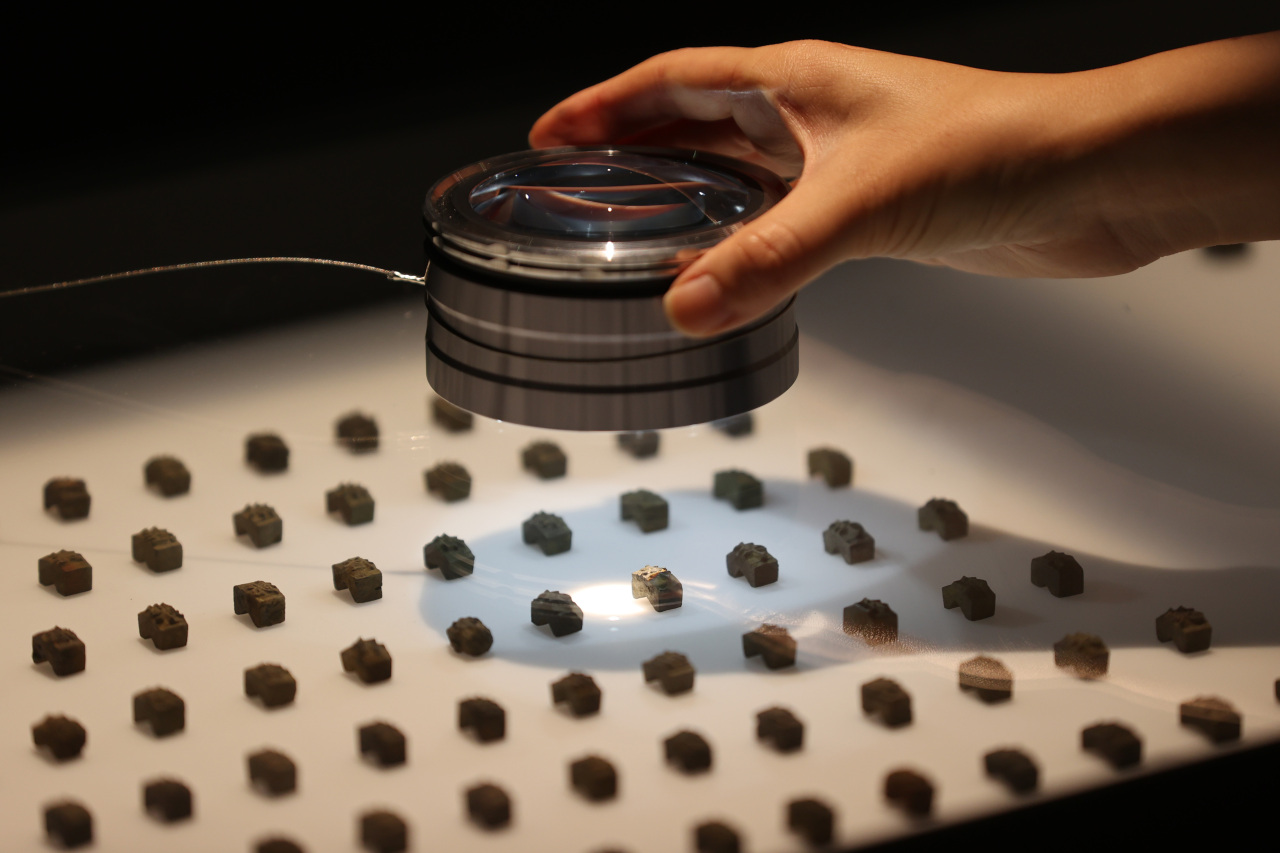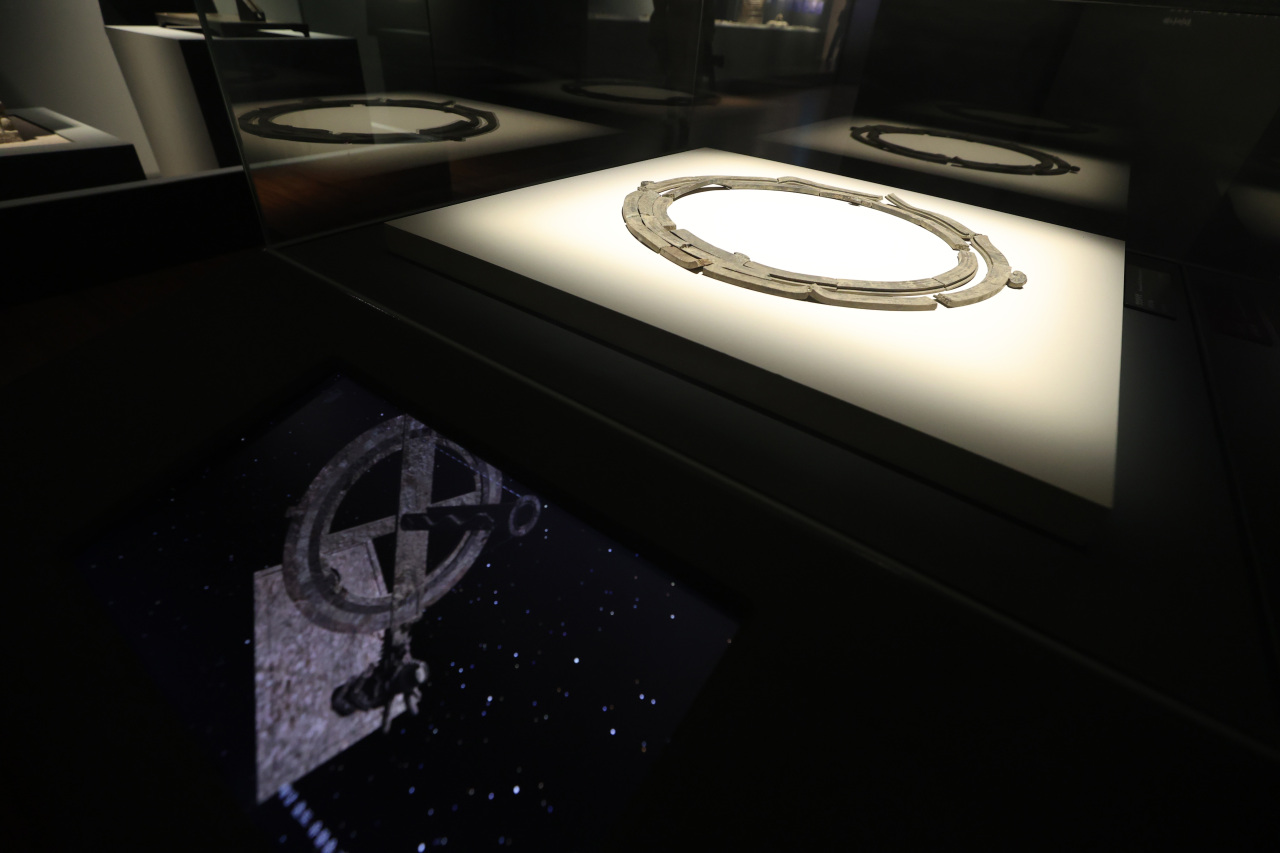Palace Museum exhibition lifts lid on Insa-dong excavation site
Artifacts discovered in June include an instrument used to tell time, previously known only through records
By Song Seung-hyunPublished : Nov. 2, 2021 - 18:53

An exhibition that aims to bring the Insa-dong excavation site to visitors opens at the National Palace Museum of Korea in Seoul on Wednesday.
The exhibition, titled “Encounter with the Brilliant Scientific Technology of the Joseon Dynasty,” displays 1,775 artifacts excavated from a site in Insa-dong, central Seoul, in June. It is organized jointly by the National Palace Museum of Korea and the Sudo Institute of Cultural Heritage, also based in Seoul.
“Since many people showed interest in the relics discovered in Insa-dong in June, we are showcasing all of them, even the small fragments,” National Palace Museum of Korea Director Kim In-gyu said at a press conference Tuesday.
The first part of the exhibition presents movable metal type blocks from the early Joseon era that were discovered at the Insa-dong dig site. It begins with a broken pottery jar that was found buried in the ground containing 1,600 movable metal type blocks.
“We purposely displayed the jar on the floor of the hall, so that the visitors can view it from above, just the way we found it in Insa-dong,” said Lee Sang-baek, a curator at the museum.
According to the museum, 48 of the movable metal type blocks were made in 1434 under King Sejong’s orders. By comparison, the Gutenberg Bible -- once thought to be the world’s oldest published book -- was printed in Mainz, Germany, in 1455. Forty-two of the movable metal type blocks were made in 1455 under King Sejo and 214 others were made in 1465, also under King Sejo.
On one side of the hall, there are 304 movable metal type blocks displayed side by side with documents, such as “Geunsarok” (“Reflections on Things at Hand”) from 1435 and “Neungeomgyeong” from 1461, which were used to cross-check the museum’s research on the time periods when the movable metal type blocks originated.

Magnifying glasses are on hand in the hall for visitors who wish to take a closer look at the movable metal type blocks.
The second part of the exhibition shows excavated artifacts that demonstrate the scientific endeavors and achievements of the early Joseon Kingdom.
The most important artifact in this section is the “Sun-and-Star Time Determining Instrument,” which uses shadows made by the sun during the day and by the stars at night to tell the time. Before it was excavated from Insa-dong, the instrument existed only in the records.
“Before this instrument was discovered, we didn’t know that the handle on it was shaped like a cloud,” Lee said.
Toward the end of the exhibition hall, a one-hand cannon from 1583 and seven small hand cannons from 1588 are on display. Each cannon has detailed information engraved on it -- when it was made, who made it, its weight and how much gunpowder must be used.
The exhibition ends with yellow plastic boxes containing items and fragments excavated in June. These are items whose purpose the museum has not yet been able to identify.
“These yellow containers are ones that we actually used when transferring relics to our museum,” Lee said. He added that the boxes were displayed to make visitors feel as if they were at the excavation site in Insa-dong.
The exhibition runs through Dec. 31.


















![[KH Explains] Hyundai's full hybrid edge to pay off amid slow transition to pure EVs](http://res.heraldm.com/phpwas/restmb_idxmake.php?idx=652&simg=/content/image/2024/04/18/20240418050645_0.jpg&u=20240418181020)

![[Today’s K-pop] Zico drops snippet of collaboration with Jennie](http://res.heraldm.com/phpwas/restmb_idxmake.php?idx=642&simg=/content/image/2024/04/18/20240418050702_0.jpg&u=)